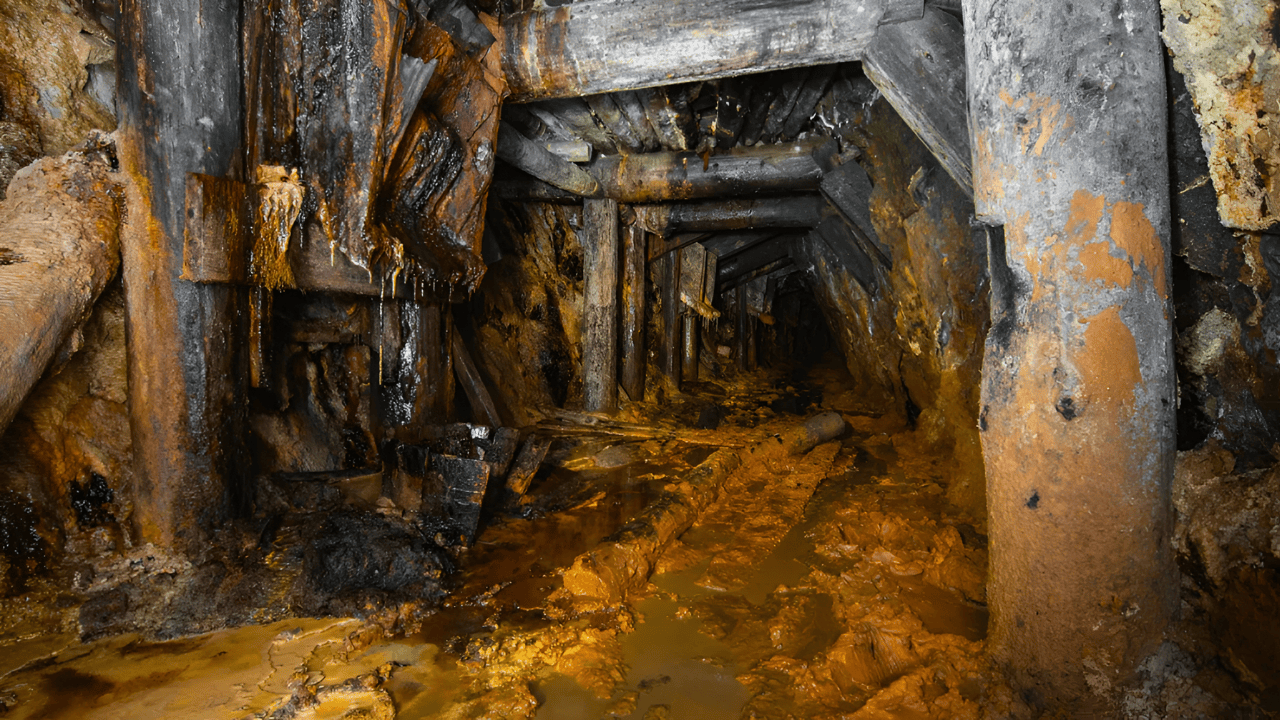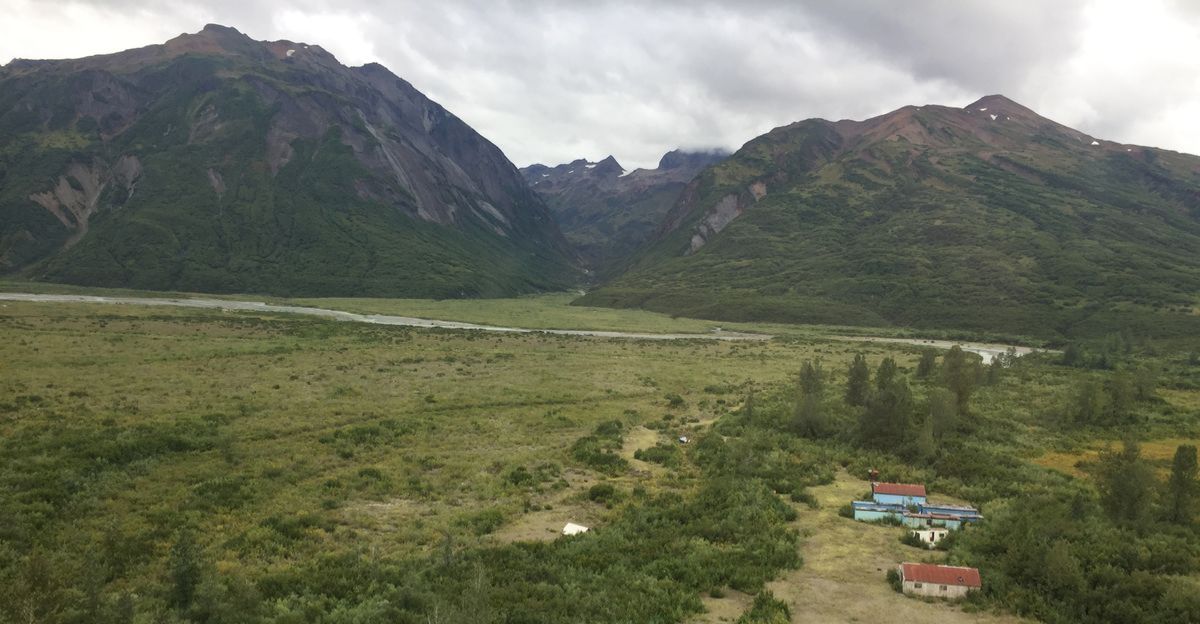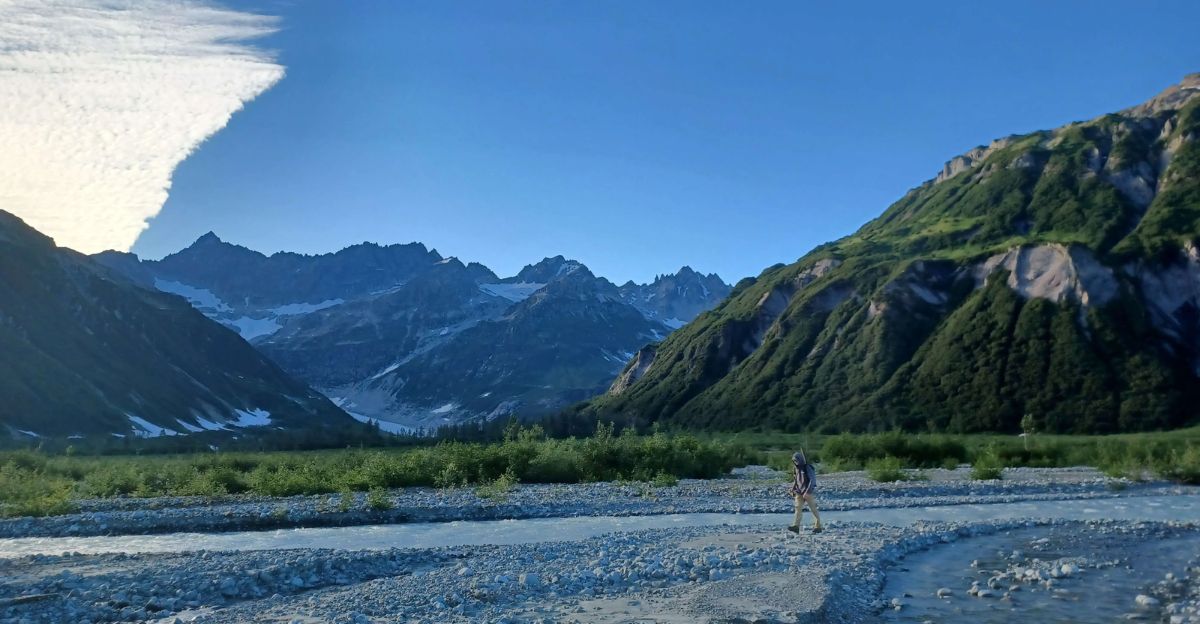
Alaska’s most pristine national park faces an economic and environmental crossroads.
A billion-dollar gold mine could transform Lake Clark National Park, potentially threatening both jobs and the park’s precious wilderness.
Local communities and national leaders watch closely as competing economic and environmental interests clash sharply.
Everyone recognizes the risks, but some business leaders see substantial profit potential ahead. The stakes continue to rise as negotiations intensify daily.
Alaska’s Hidden Tract

Johnson Tract spans 20,942 acres within Lake Clark National Park, with Cook Inlet Region, Inc. (CIRI) holding the legal ownership.
A pivotal 1976 land exchange granted CIRI this valuable, mineral-rich property, which had remained largely untouched for nearly fifty years. Today, geological surveys estimate billions in mineral deposits underground.
This geographical isolation explains why the proposed mine could have a significant impact on regional wildlife, employment opportunities, and the entire regional economy.
Historic Land Rights

CIRI, an Alaska Native corporation representing nearly 10,000 shareholders, secured the Johnson Tract through a historic federal settlement that carefully balances Native land claims with park conservation goals.
The 1976 Cook Inlet Land Exchange allowed CIRI to relinquish previous property claims in exchange for this mineral-rich plot.
Now this fifty-year-old compromise fuels a new conflict over money, Indigenous rights, and environmental regulatory rules that affect communities.
Park at Stake

Lake Clark National Park protects over four million acres encompassing mountains, forests, salmon streams, and critical bear habitat throughout the pristine region.
Johnson Tract represents its only sizable privately owned property within park boundaries. New federal easements could open 2,642 acres for mining roads and port infrastructure development.
Critics warn that introducing heavy industry into this “completely intact” wilderness risks causing permanent and irreversible ecological damage to fragile ecosystems.
Billion-Dollar Gold

The mine’s mineral deposits are estimated to be worth over one billion dollars, according to both company and independent assessments.
Recent drilling confirms 1.05 million ounces of gold-equivalent at current prices of $4,000 per ounce, plus substantial copper and zinc reserves beneath.
CIRI and Contango Ore anticipate significant financial benefits ahead, including future royalties and employment opportunities.
This ambitious project could significantly transform the regional economy for decades.
Job Tension

Supporters argue that the project will create hundreds of construction and mining jobs, with substantial ripple effects for hunting guides, lodge operations, and supply vendors throughout the region.
The University of Alaska documented tourism jobs at 455–490, while Tuxedni Bay commercial fishing employs dozens of crews on a seasonal basis.
Regional salmon and sport fishing employment tops 9,000 jobs combined across Cook Inlet.
The “1,200 jobs at risk” headline highlights a significant local economic vulnerability.
Families in the Crosshairs

Fisherman Dustin Solberg’s family cabin sits directly in the planned industrial port’s construction path.
Solberg told the media that their livelihoods could be “steamrolled” by massive industrial shipping operations taking over the bay.
Tourism operators and lodge owners fear that increased noise, traffic, and pollution will deter visitors from visiting the region, potentially threatening the area’s $50.9 million annual tourism economy significantly.
Environmental Cascades

Cook Inlet beluga whales have declined 75 percent since 1979—now fewer than 350 remain alive in the region.
A 2024 NOAA research study identified Tuxedni Bay as its only known winter feeding ground in Alaska.
Environmental critics argue that mine roads, airstrips, and ore transport ships threaten belugas, salmon populations, seabirds, and bears. They are vital to the park’s character and ecological balance.
Heated Debate

The Center for Biological Diversity and Cook Inlet keeper sued the Army Corps of Engineers, challenging its 2024 permit decision directly.
They argue the agency ignored documented threats to endangered species and water quality protections required by law.
CIRI and Contango Ore countered that they committed to “minimal environmental impact” standards with extensive exploration data supporting their mitigation plans and safety measures.
Federal Green Light

On January 15, 2025, the Interior Department granted CIRI two crucial easements. Allowing for the transportation of minerals across park lands and opening 2,642 acres for industrial use.
The Army Corps of Engineers approved a road and airstrip permit in 2024 despite strong regulatory challenges from environmental groups.
These federal approvals effectively cemented the mine’s legal pathway—unless future court decisions or policy changes reverse them.
Native Rights

CIRI’s stake in Johnson Tract combines financial interests with cultural significance for Alaska Native communities across the region.
Some Indigenous leaders note CIRI’s 10,000 shareholders stand to gain substantially from future royalties and equity stakes in the mining operation.
Yet tribal groups, including the Chickaloon Village Traditional Council, joined environmental lawsuits. They claimed the project threatens their heritage, practices, and indigenous ecosystem stewardship traditions deeply.
Industry Perspective

Contango Ore CEO Rick Van Nieuwenhuyse, a forty-year veteran of the Alaska mining industry, cites extensive exploration data to support claims of deposit size and profitability.
The company plans underground mining operations, deliberately avoids open-pit mining methods that harm landscapes, and emphasizes advanced water quality control engineering.
Van Nieuwenhuyse asserts Contango “recognizes the pristine landscape” and maintains commitment to “minimal impacts.” Critics remain deeply skeptical about promises.
Local Responses

Bear viewing guides, commercial fishing crews, and lodge owners organized coordinated opposition efforts, citing threats to wildlife, cultural values, and losses to the tourism economy.
Small regional businesses heavily depend on maintaining a reputation for an unspoiled wilderness for their survival and success.
They express fears that increased truck traffic, construction noise, and industrial pollution will permanently repel potential visitors and harm traditional community livelihoods.
Cumulative Impacts

Regional economists warn that the proposed seven-year mine operation may create a short-term economic boom but potentially cause long-term community harm overall.
While royalty revenues could significantly help CIRI and local budgets, resulting environmental damage could undermine the tourism and fishing sectors for years afterward.
The mine’s economic ripple effects extend far beyond the park boundaries of Lake Clark to surrounding communities.
What’s Next?

Environmental groups actively seek court injunctions, while federal agencies closely monitor permit compliance during construction phases.
Industry analysts expect major regulatory reviews in early 2026, especially if new beluga habitat or water contamination studies emerge from ongoing research efforts.
Community leaders urge stakeholders to weigh short-term economic gains against substantial long-term environmental risk properly.
Court decisions and policy updates could still change everything.
New Investigations

Fresh legislative hearings in Washington and Alaska now directly target federal permitting processes and endangered species protection standards.
Congressional investigators re-examine the Army Corps of Engineers’ 2024 permit decision and review newly filed scientific studies on acid mine drainage risks comprehensively.
Multiple lawmakers warn that this outcome could establish a national legal precedent for granting mining access on private land within federal parks nationwide.
Industry Ripple Effect

The Johnson Tract mining debate continues to reverberate across the mining, tourism, and regulatory sectors nationwide today.
Investors and regulators in Montana and Nevada actively track Alaska’s debate for parallels in resource extraction on complex-ownership land situations.
Nationwide, Indigenous rights and conservation protection battles pit economic development against environmental protection in similar cases across multiple states and regions daily.
Public Perception

Social media platforms dramatically amplified tensions, spreading viral claims about beluga extinction risks, fishing closure scenarios, and the consequences of environmental destruction.
Misinformation spreads rapidly online; environmental experts advise the public to rely on official agency reports, peer-reviewed scientific studies, and formal legal filings for accurate information.
Community leaders are actively working to counter false rumors and clarify that court cases and regulatory reviews remain pending, with no final decision yet.
Historical Parallels

Alaska’s mining-versus-conservation conflicts date back decades, as exemplified by the ongoing Pebble Mine battle in Bristol Bay, the ongoing debate over Arctic National Wildlife Refuge regulations, and earlier land disputes.
Each historical case required weighing vast resource wealth against ecosystem integrity and cultural traditions carefully during deliberation.
Past outcomes depended on negotiation, litigation, and shifting public values over time—suggesting no easy answers emerge for Johnson Tract today.
The Bottom Line

Johnson Tract distills Alaska’s core challenge: balancing economic opportunity against its irreplaceable nature and cultural heritage for future generations with care.
Both competing sides defend what they see as vital community interests and values.
The ultimate outcome tests how Alaska’s leaders, federal leaders, and Indigenous corporations weigh job, mineral, and wilderness preservation priorities.
Debates continue vigorously; big decisions loom ahead, certainly.
Sources:
Cook Inletkeeper – Johnson Tract landing page (Advocacy group overview, map resources, further legal filings)
Alaska Department of Fish and Game—Cook Inlet Salmon Regulations (Official regional fishery rules, direct numbers on commercial fisheries employment and resource use)
National Parks Conservation Association – “A Best-Kept Secret at Lake Clark Is in Danger” (NPCA summary of beluga habitat and history of the mining dispute, independent of legal filings)
HighGold Mining Inc. news releases — Before Contango’s acquisition (Historical perspective, previous corporate plans, additional geological data)
U.S. Army Corps of Engineers Permit Database (Full text of CWA permit documents, procedural history)
Alaska Economic Trends magazines prior to 2024 (Background on Alaska mining jobs, sector analysis, not just current projections)